"Après le départ" postmark
We do not know the exact date when the "Après le départ" postmark was introduced into the equipment inventory of post offices in the departments. All we know is that it first appeared in Paris at the beginning of 1850 and in the larger provincial post offices at the beginning of 1854.
Its purpose was to indicate that a letter had been posted after the final collection from the post office’s letterboxes. Consequently, the letter would not be dispatched on the day it was posted and would therefore be subject to a slight delay.
This indication was important because, at the time, recipients of letters sent within mainland France could generally expect to receive them the day after they entered the postal system or even on the same day if delivered within the post office’s locality. Delays beyond D+1 could lead to complaints from users.
At the same time, post office letterboxes were emptied several times a day, and in most towns with a post office, mail was also delivered multiple times daily.
The General Instruction of 1856 outlines the procedure to be followed for letters posted after the final collection.
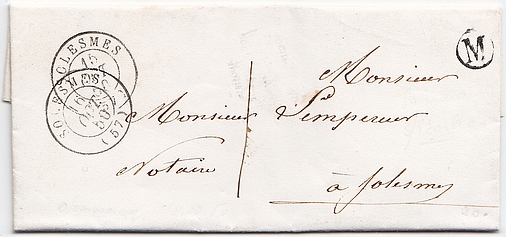

1850: Letter from SOMMAING (rural box M) for SOLESMES. The letter was brought back to the office on 15 October (presumably) after the last distribution and was delivered on the 16th.
From 1854 onwards, the "Après le départ" stamp was introduced, eliminating the need to apply the date stamp of the day of dispatch.
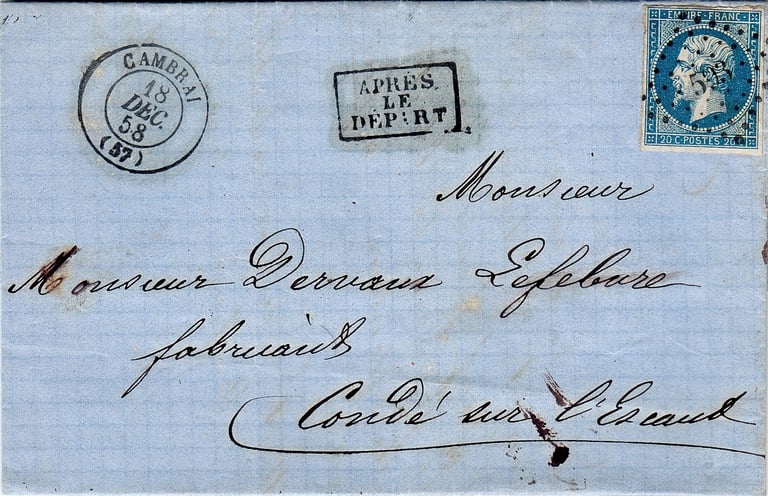

1858: Letter mailed in CAMBRAI on December 18, 1858 after the last collection of the post office. Left CAMBRAI, the 19, it arrives on December 20 at CONDE-SUR-L'ESCAUT.
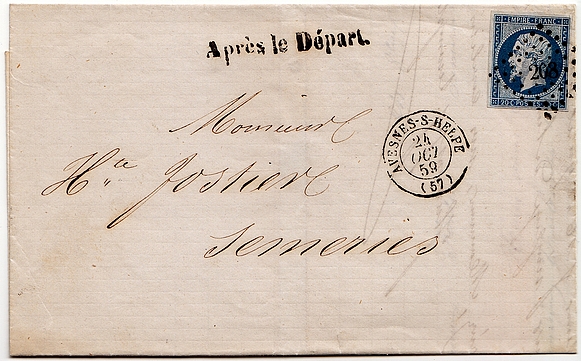

1859: Letter weighing over 7.5 g franked at 20 c from AVESNES to SEMERIES. The "Après le Départ" mark indicates that the letter was posted after the last collection. This mark is locally made, as it does not correspond to the regulatory model.
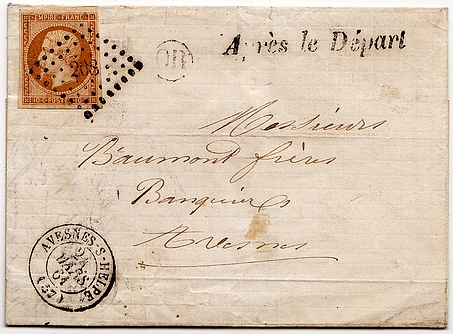

1861: Letter given to the postman during his round in the village of FELLERIES (OR mark) for AVESNES.
The "Après le Départ" mark is also locally made, but of a different type.

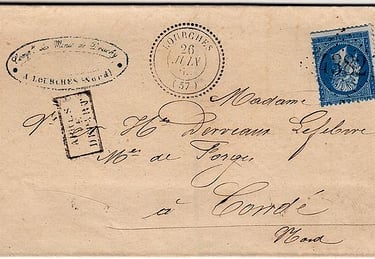
1866: Letter deposited at the post office of LOURCHES on June 26, after the last collection.
The new General Instruction published in July 1868 followed the same procedure as in 1856.
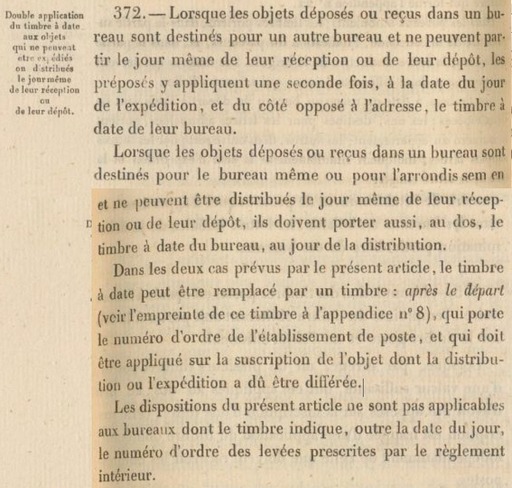

Article 372, General Instruction on the Postal Service of 1868.
However, it should be noted that the "Après le départ" stamp does not appear to have been compulsory, as a post office could still apply two date stamps to a letter posted too late. Nevertheless, the inventory of post office equipment appended to the General Instruction does indicate the presence of this stamp.
Additionally, since the General Instruction of 1856, a new type of date stamp had come into use, displaying not only the day's date but also the mail collection number. In post offices using this new type of date stamp (mainly in Paris), the "Après le départ" stamp was no longer required.
Furthermore, the "Après le départ" stamp presented in the General Instruction of 1868 now included the office's serial number.

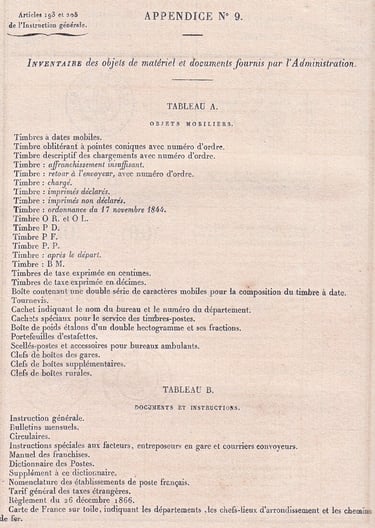
Appendix 9, General Instruction of 1868.
Instruction no. 1 in the Monthly Bulletin of July 1868 put an initial stop to the use of this stamp.
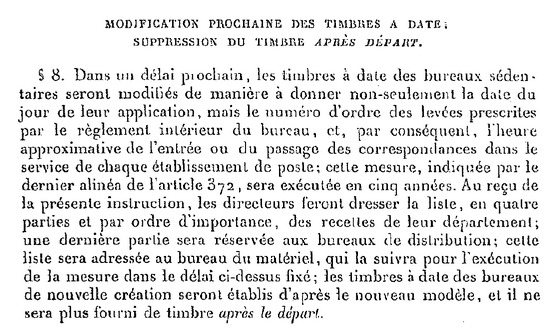

Extract from instruction no. 1 of the July 1868 Monthly Bulletin.
The date stamps in question are types 16, 17, 23 and 24, as they are known to philatelists. The number of mail collection is shown on the left-hand side of the date block. Users were well aware of the number of times the mailboxes were emptied, as this was widely publicised in the press, local almanacs and at the post office entrance.








Type 17
Type 16
Type 23
Type 24
The deployment plan for these new date stamps was planned over 5 years, but in fact by 1870 these date stamps had equipped all the post offices.
The second stop came with the Monthly Bulletin of February 1869 and the impossibility of ordering this stamp from the usual supplier, Mr Virey.
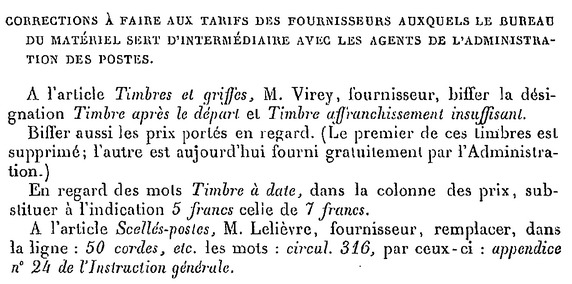

Extract from the February 1869 issue of the Monthly Bulletin.
However, some post offices equipped with new date stamps continued to use their "Après le départ" cachet.
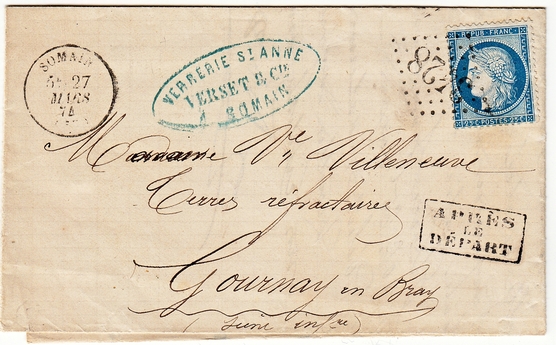

1874: Letter posted at the SOMAIN office after the 5th and last collection. This post office is still uselessly using its "Après le départ" postmark.
The end this stamp was pronounced with Instruction no. 196 published in the April 1876 issue of the Monthly Bulletin.
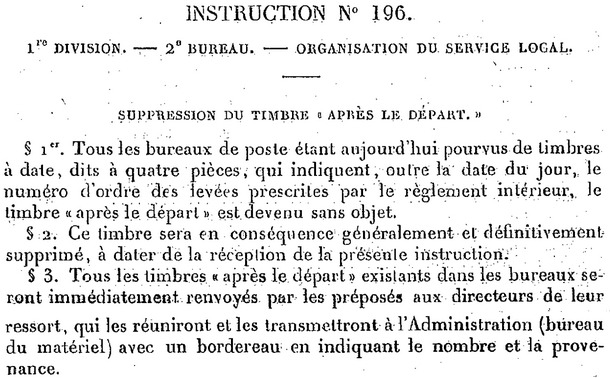

Extract from the April 1876 Monthly Bulletin.
Article 406, General Instruction on the Postal Service of 1856.
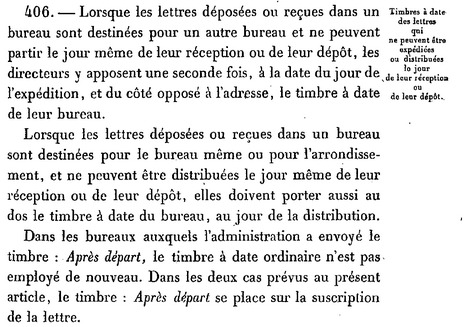





Special type 1867
Type 1854
Before 1856, if a letter was deposited at the post office after the final collection, the office would apply the date stamp of the day of deposit on the front of the letter, followed by the date stamp of the day of departure (or delivery).

